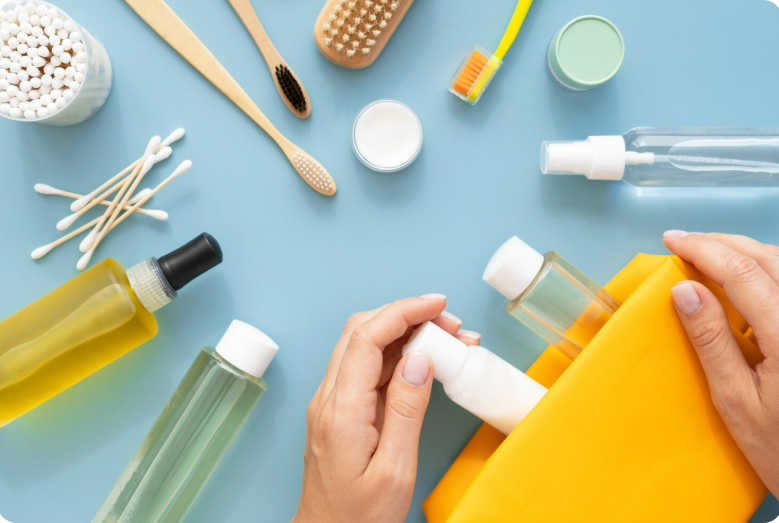Making the switch to environmentally conscious cleaning solutions doesn’t mean compromising on the sparkle and shine you expect from your home. If you’ve been hesitant about going green with your cleaning routine, worried that natural products won’t deliver professional-level results, you’re not alone. However, the truth might surprise you: today’s sustainable cleaning solutions are scientifically formulated to match—and often exceed—the performance of traditional chemical-laden products.
Understanding Why Traditional Cleaners Fall Short
Before diving into the transition, it’s worth understanding what you’re moving away from. Conventional cleaning products typically contain harsh chemicals like ammonia, chlorine bleach, phthalates, and volatile organic compounds (VOCs). These ingredients don’t just disappear after you wipe down your counters—they linger in your indoor air, settle on surfaces your family touches, and eventually make their way into waterways through your drains. Research shows that indoor air pollution can be two to five times higher than outdoor air pollution, with cleaning products being a significant contributor.
The Power of Modern Eco-Friendly Cleaning Products
Today’s eco-friendly cleaning products have come a long way from the weak, ineffective formulas of the past. Modern green cleaners harness powerful plant-based ingredients like coconut-derived surfactants, enzymatic cleaners, and naturally antibacterial essential oils. These ingredients work at a molecular level to break down dirt, grease, and grime just as effectively as synthetic chemicals—but without the toxic residue or environmental damage. Brands now invest heavily in research and development, creating concentrated formulas that deliver impressive cleaning power while using renewable, biodegradable ingredients.
Start Smart: A Room-by-Room Transition Strategy
The key to a successful switch is taking it one step at a time. Don’t throw out all your existing products at once—this creates waste and can be overwhelming. Instead, start with your kitchen, the heart of your home. Replace your all-purpose cleaner and dish soap first, as these are products you use daily. Once you’ve found brands you trust in the kitchen, move to the bathroom, then laundry, and finally specialty products like floor cleaners and furniture polish. This gradual approach allows you to test products thoroughly and find the ones that work best for your specific cleaning needs.
Decoding Green Labels and Certifications
Not all products claiming to be “natural” or “eco-friendly” live up to their promises—a practice known as greenwashing. To ensure you’re getting genuinely sustainable products, look for third-party certifications like EPA Safer Choice, USDA Certified Biobased Product, Green Seal, or Leaping Bunny (for cruelty-free verification). These certifications require products to meet strict standards for ingredient safety, environmental impact, and transparency. Additionally, seek out brands that disclose their full ingredient lists—true eco-friendly companies have nothing to hide and proudly share what’s in their formulas.
DIY Solutions: Simple Recipes That Actually Work
Creating your own cleaning products offers ultimate control over ingredients while saving money. A simple all-purpose cleaner combining one part white vinegar, one part water, and ten drops of lemon essential oil tackles most surfaces beautifully. For tougher bathroom grime, make a paste using baking soda and a few drops of castile soap—this gentle abrasive removes soap scum without scratching. A spray bottle filled with vodka or rubbing alcohol mixed with water serves as an excellent glass and mirror cleaner. These DIY solutions eliminate single-use plastic bottles while costing pennies per batch.
Mastering Techniques for Maximum Effectiveness
Even the best eco-friendly cleaner won’t perform well with poor technique. The secret to green cleaning success lies in understanding that natural products often work differently than chemical ones. Allow cleaners to sit on surfaces for several minutes before wiping—this dwell time lets natural enzymes and acids break down dirt effectively. Invest in quality microfiber cloths, which trap 99% of bacteria and dirt using only water in many cases. Use hot water when possible, as heat naturally enhances cleaning power without requiring stronger chemical formulations.
Tackling Tough Cleaning Challenges Naturally
Worried about whether natural products can handle serious messes? Baked-on oven grease responds beautifully to a paste of baking soda and water left overnight. Hard water stains dissolve when sprayed with undiluted white vinegar and left for 15-20 minutes. Mold and mildew retreat from tea tree oil’s powerful antifungal properties. For disinfecting, hydrogen peroxide (3% solution) kills bacteria and viruses effectively—just spray it on surfaces and let it sit for five minutes. These targeted approaches prove that eco-friendly cleaning can handle even the toughest household challenges.
The Ripple Effect of Your Green Choice
Every sustainable cleaning product you purchase creates positive environmental impact far beyond your home. You’re reducing petroleum dependence, preventing toxic chemicals from entering ecosystems, and supporting companies investing in renewable resources and ethical manufacturing. Many eco-friendly brands also use concentrated formulas, reducing packaging waste and transportation emissions. Your purchasing power drives market demand for greener options, encouraging more companies to develop sustainable alternatives and making eco-friendly products increasingly accessible and affordable for everyone.
Switching to eco-friendly cleaning products is one of the easiest, most impactful changes you can make for your health and the environment—and you won’t sacrifice a single bit of cleanliness in the process.
 :
https://www.pinterest.com.au/wyndhamcleaning/
:
https://www.pinterest.com.au/wyndhamcleaning/

